How should YOU feel about SeaWorld?
The documentary, Blackfish, was released in 2013. It explores the life of Tilikum, a performing orca that had killed two trainers and one civilian in his lifetime. The film, which is very anti-captivity, opens with a recorded police report of a killer whale having attacked a trainer. Now I know what you’re thinking…what an intense attention-getter. And for the rest of the film, I assure you, the filmmakers held no punches.
However, do not worry, I have assembled a list of SeaWorld’s responses to Blackfish, so you can make your own decisions about this controversy.
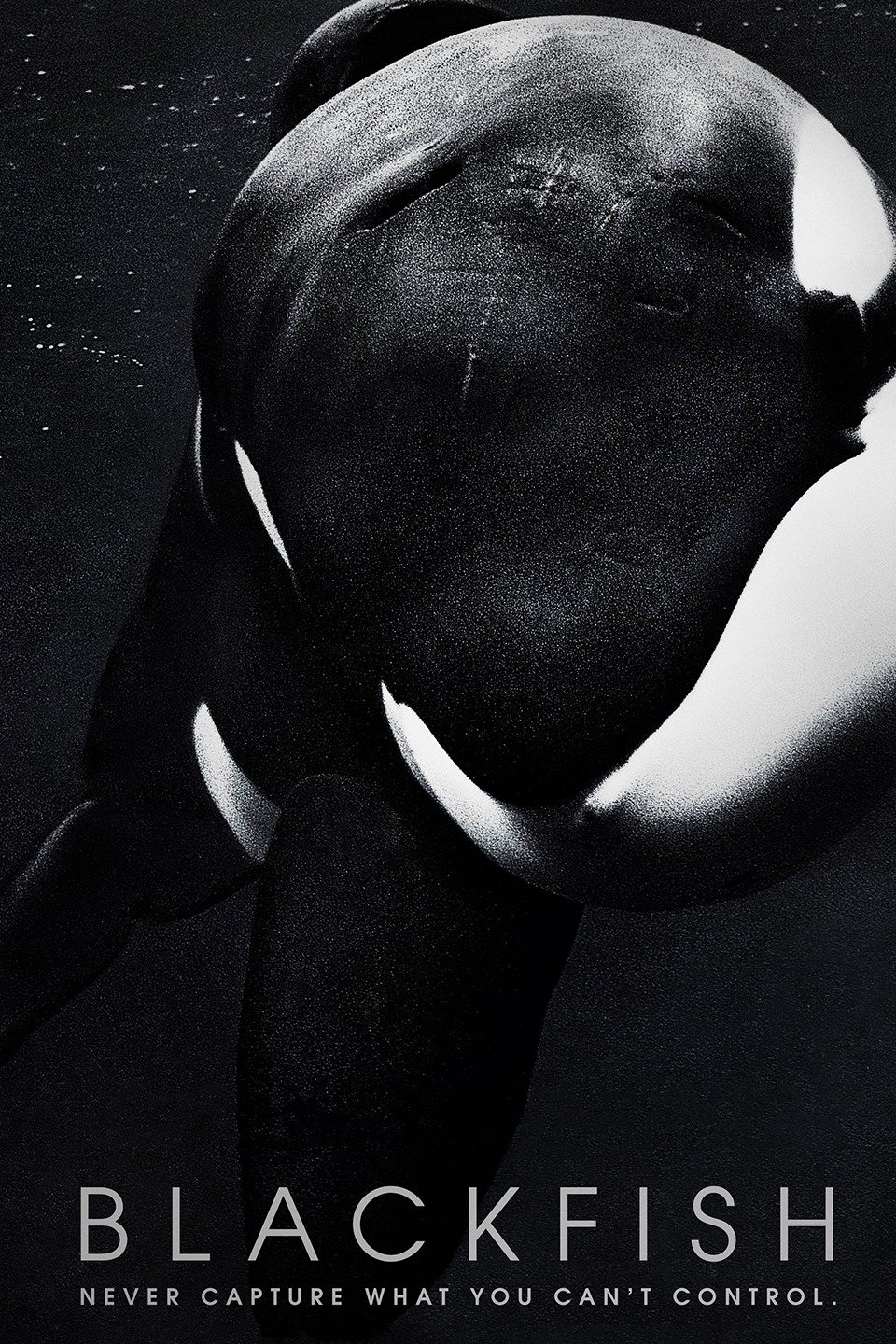
Let’s talk about orcas
Before we get into SeaWorld, let’s talk about how cool and amazing orcas are. Orcas, also known as killer whales, were feared by the public until SeaWorld was able to show people how beautiful and talented these creatures are.5 The orca is a friendly and intuitive animal, much similar to a dolphin. To this day, there is no record of them harming a human being in the wild. Orcas have lifespans similar to human beings, and also share relationships with their families for their entire lifetime. There are groups of orcas known to stay in one general area, feeding mainly on fish, as well as groups of orcas that are transient, traveling hundreds of miles and feeding mainly on marine mammals.6 The pods are matriarchal, with males floating around the perimeter.
Research has found that orcas have a part of the brain that humans do not have, a region known as the paralimbic cleft.3 This area is used for emotional processing. Orcas, and other whales, have highly elaborate emotional lives. They show signs of intelligence, self-awareness, and even language. They are intensely bonded with members of their pod, which can be seen in mass strandings, where whales refused to leave the side of their comrades.3 It is thought that their sense of self is distributed amongst other individuals in the pod, and when an individual is taken away, both the individual and the pod are majorly affected.
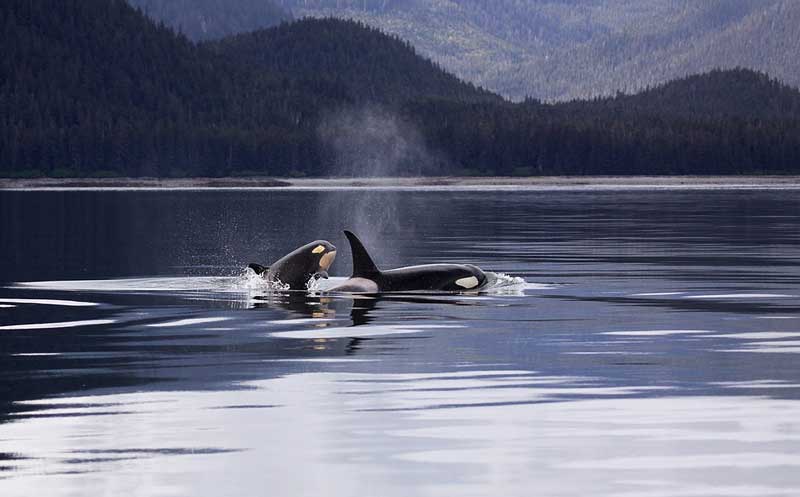
How do SeaWorld trainers feel about this?
Blackfish filmed many former trainers for an insider look at the SeaWorld business. There is no question that these people working closely with the animals truly do care for them. The trainers form relationships with their orcas over the years, learning their personalities and watching them grow, both as performers and in their lives.
The trainers also admitted to not knowing much information about orcas before entering a job with SeaWorld. The requirements for a trainer, at the time, fell heavily on having an outgoing personality and being a strong swimmer.3 Once hired, staff went through immense training to understand how to train an animal and be physically fit to do so. As for the company, SeaWorld does treat their whales with as much care as they can. Each orca has a customized diet and receives special treats for enrichment.5 There are no signs of maltreatment by SeaWorld to the whales, other than the fact that they are in enclosures instead of in the open ocean, which SeaWorld can’t really control.
How does SeaWorld get their orcas?
Please understand that SeaWorld captured orcas from the wild in a different time, when not much was known about the effect it would have on the whales. This happened nearly 40 years ago, and was stopped once SeaWorld was able to own breeders for in-tank births.5 When people went to hunt orcas, they did things that would scare the orcas into a tight pod formation. They would then herd the pods into coves where they could not escape the boats. Once in a closed space, they would lay down nets and separate the young whales from the rest of their families.3
Remember those intense emotional bonds we talked about earlier?
While the young orcas were being taken, the rest of the pod would stay in the area and call to their young. One of the crewmembers that was interviewed for the film said he felt like he was kidnapping someone’s child while they watched.3 Now again, remember that over 80% of the whales owned by SeaWorld were born in the parks.5 These captures have become a distant memory for SeaWorld business practices.
At least SeaWorld keeps the babies with their mothers, right?
Most of the time, SeaWorld does keep mother and child together. At SeaWorld San Diego, you can actually see three generations of orcas living together.5 However, if SeaWorld sees any signs of danger or harm to mother or child, they will separate the two. Blackfish argues that this could also happen if the baby is causing disruptions in the performances. The film describes two instances where they moved calves to other parks. In both cases, the mothers were in obvious grief.3 One mother remained in the corner of the pool for the entire night, shaking and crying over the separation. Another mother was recorded doing something they had never heard before, making long range vocals to attempt to find her calf.
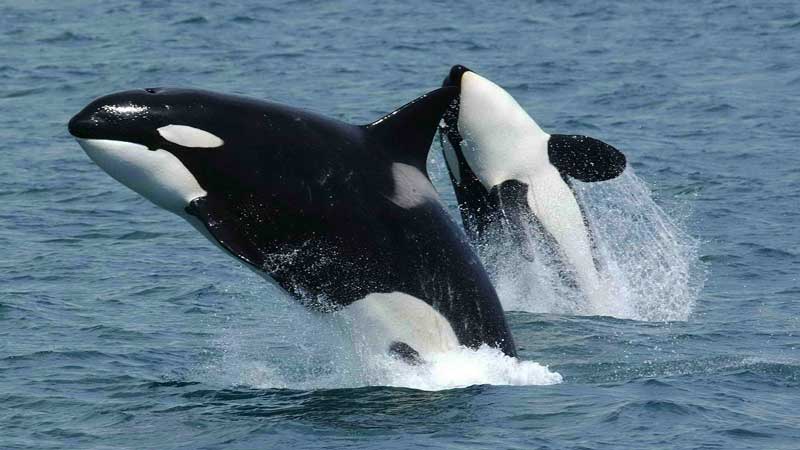
Captivity sounds terrible
Yeah, you’re right, a large mammal probably isn’t happy in an enclosure. There are a lot of microaggressions between captive orcas that never happen in the wild, because there’s room to get away in the wild. It also appears that captive orcas tend to die young, at around 25-35 years of age.3 For a long time, SeaWorld has said that these things were normal, and would happen in the wild as well. They have listed one independent source that states survival is comparable between captivity and the wild.2 However, this article has been contested as being skewed, as it does not look at actual longevity, just at the health of a population and the odds for survival in a given year.1 Most research has shown that wild male orcas will live between 50 and 70 years, while females have been documented living over 100 years.3
Now, some good things have come from having orcas in captivity. SeaWorld orcas have participated in over 350 studies focusing on knowledge not previously attainable in the wild.5 They are also a face of the importance of conservation and oceanic protection.

Wasn’t this about a specific whale?
You’re right, I should start talking about Tilikum, the whale that sparked this topic to be made into a film. Tilikum was two when he was captured in 1983 off the coast of Iceland.6 He was then moved to SeaLand, a marine park in Canada. SeaLand had only been open for 14 years, and were not known for keeping whales alive. A trainer that worked with Tilikum and their other residential whales, two females named Haida and Nootka, used negative reinforcement on the whales. If Tilikum ever produced the wrong behavior, the trainer would withhold food from all three whales.3 This caused tension and aggression between the whales.
After park closure, the owner feared that activists would cut the nets to free the whales, so he moved them into a small, metal box until staff returned in the morning. The box, which was 26 feet wide and 20 feet deep, would have been small for one orca, not to mention three orcas that were not getting along.6 In the morning, the whales showed signs of teeth raking, as well as scratches from the sides of the box.
Keltie Byrne was a trainer and Olympic swimmer that worked part-time at SeaLand. She was the first trainer to die by orca. It has been hypothesized that the intense sensory deprivation Tilikum experienced at SeaLand led to psychosis, which is thought to have led to her death.3 Keltie Byrne slipped when walking along the tank and was pulled into the pool with the three orcas. The crowd in attendance of the orca show was there to witness the event. After the attack, SeaLand closed its doors and sold all three orcas to SeaWorld.
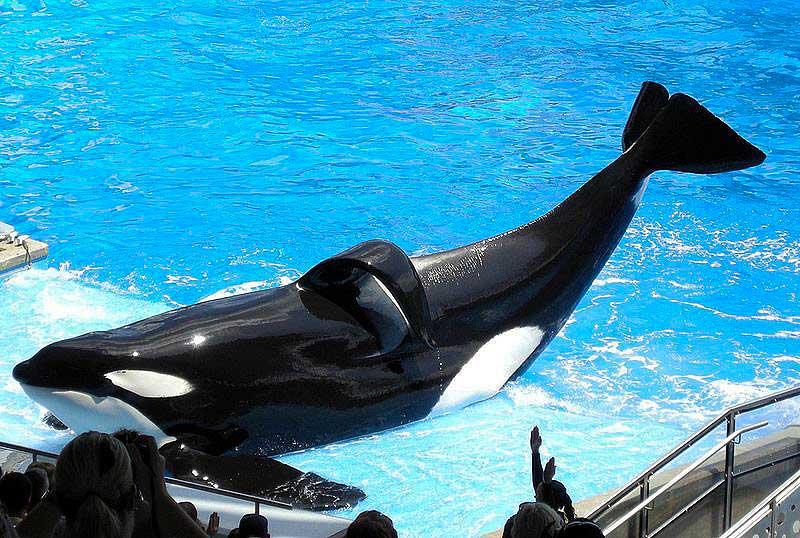
New home, New Tilikum
Tilikum was an exciting edition to the SeaWorld franchise because he could be used as a breeder. It was also exciting because SeaWorld was established and much more equipped to care for orcas. The trainers at SeaWorld did not know the full story behind Keltie Byrne. They were under the impression that the other whales were the ones that were the cause of the attack.3
Tilikum endured more torment and aggression when he entered a new society of females. However, he was described as friendly and trustworthy, and seemed to love working and learning with the trainers. Still, not every trainer was allowed to work with Tilikum. It was written in his profile that he has been known to lunge out of the water at his control trainer.3 Even though he had a tendency to have outbursts of aggression, SeaWorld continued to breed him.
So it sounds like Tilikum is the only “killer” killer whale
You would think that. This article is about him. He is the only orca in SeaWorld possession that has killed a human being.6 However, working with orcas is a completely unpredictable task, which has many dangers.5 Many trainers have been hurt by whales, but have always thought that it is just a part of the job. If they were ever seriously injured, a backup trainer would take their place. Some instances have occurred with other whales and other trainers, like John Sillick, who was crushed between two killer whales when one landed on top of him, Tamerie Tollison, who was pulled into the pool by her boot, or Kenneth Peters, who was repeatedly drug to the bottom of the pool by one of the whales.
In each instance, SeaWorld said it was the trainers fault and not an act of aggression by the whales. Sillik was blamed for having a timing error, Tollison was blamed for being in the water without a spotter, and Peters was praised for his calm demeanor as the whales were said to play with him.3
In other parts of the world, marine parks also exist. Loro Parque is a marine park off the coast of Spain. They have a bad reputation in the marine park business, and were actually given orcas from SeaWorld.3 The trainers were unprepared and the facility was ill-equipped upon the orca arrival. The one trainer situation that was said to be comparable to SeaWorld was Alexis Martinez. He was performing in an orca show when one whale attacked him and took his life.
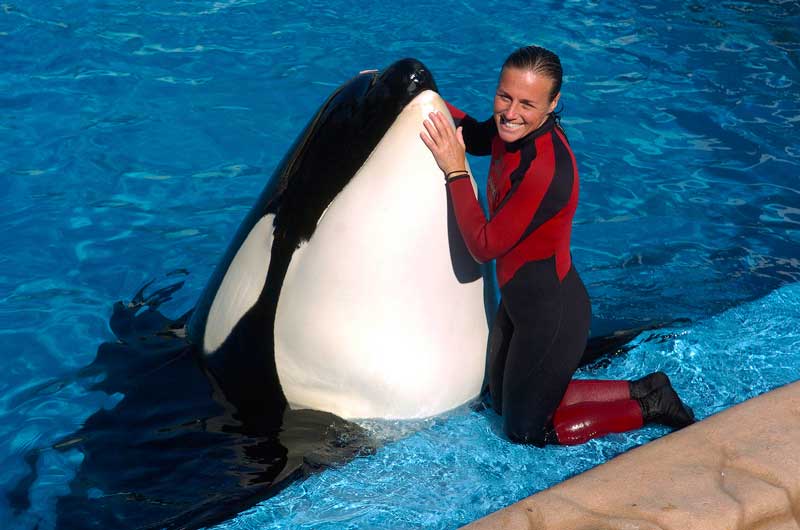
So tell me more about Tilikum
In 1990, a mentally disturbed man named Daniel Dukes was found dead in Tilikum’s tank.6 This caused much confusion, as night trainers heard nothing. An autopsy report deemed the cause of death to be drowning by hypothermia. However, the medical examiner also reports signs of Tilikum causing bruises and cuts on his body both before and after he passed away.
After this instance, SeaWorld again cut down on the number of trainers allowed to interact with Tilikum. Of the select group was an accomplished and trusted trainer named Dawn Brancheau. In 2010, witnesses reported that the whales seemed agitated and uncooperative in their daily showing.3 After the show, Dawn and Tilikum were performing in a Dine with Shamu event. Witnesses report that the beginning of the show went very smoothly, up until Tilikum missed a whistle cue, signaling good behavior, and was then not rewarded with fish. Dawn also did not split the fish rewards for good behavior evenly, and ran out of food before the show was over. This caused Tilikum to become more agitated with the situation.
As the show ended, Dawn moved Tilikum over for relationship time, which involved her rewarding Tilikum for good behavior in close proximity. As her pony tail dangled in the water, it is thought that Tilikum mistook it for a toy, and pulled her into the water.3 Other witnesses state that he pulled her in by the arm. As Tilikum had outbursts of excitement or aggression, Dawn became more and more injured, which eventually ended in her loss of life. She was the first, and only, SeaWorld trainer to be killed by an orca. This incident caused major backlash for SeaWorld. In initial interviews, executives stated that Dawn slipped into the pool. After witnesses contested the statement, they retracted and said that she made a mistake by having a long ponytail.6
The Occupational Safety and Health Administration (OSHA) took SeaWorld to court for endangering their trainers. They fought that it was unsafe to put trainers in the water with such a large, unpredictable animal.3 Their defense was that keeping large, oceanic animals in captivity led to insanity. As of 2012, the court ruled in favor of OSHA, demanding that orca trainers remain behind a barrier and may not enter water with orcas. SeaWorld has appealed the ruling. 
What happens now?
Blackfish has caused a lot of controversy, and if you’ve made it through this long post, thanks for sticking with me. Since the release of the film, SeaWorld has worked to defend their reputation while the public has begun taking sides. Debates of retirement ocean pens have been brought up as a humane alternative.3 It is not possible to release the captive orcas into the wild, as they are so dependent on humans.5 In 2016, SeaWorld made the announcement that they will stop breeding captive orcas.3 That means that the 26 orcas under SeaWorld ownership will be the last. Tilikum continued to be a part of shows in Orlando until his death in January 2017.4 He was kept in isolation, with minimal human contact, and only brought out to end shows with a big splash.
Of the whales in SeaWorld, 54% of them contain his genes.3
I am not saying that SeaWorld is something that never should have existed. I learned about my love and passion for marine life from a visit to SeaWorld. They rescue and rehabilitate animals before returning them to the wild. They are a major group in oil spill clean-ups.5
What we must now ask ourselves, is at what cost do we receive this marine knowledge?
Maybe, just maybe, we have learned all we need to know from orcas, and can finally return them to their natural habitat, where we can appreciate them as the wild, beautiful beings that they are.

- Barlow, J., Brownell Jr., R. L., DeMaster, D. P., Forney, K. A., & Lowry, M. S. (1995). U.S. Pacific Marine Mammal Stock Assessments. Publications, Agencies and Staff of the U.S. Department of Commerce(117), 73-77.
- Dold, C. (2015, March 25). Fact: Whales live as long at SeaWorld. Tampa Bay Times.
- Oteyza, M. (Producer), & Cowperthwaite, G. (Director). (2013). Blackfish [Motion Picture].
- SeaWorld Parks & Entertainment, Inc. (2017, January 6). The Life and Care Of Tilikum At SeaWorld. Retrieved from SeaWorld: seaworldcares.com/tilikum
- SeaWorld Parks and Entertainment, Inc. (2018). Here’s what Blackfish didn’t tell you. Retrieved from SeaWorld: blackfish.seaworld.com
- Zimmerman, T. (2010, July 30). The Killer in the Pool. Outside Magazine.
At High Trails Outdoor Science School, we literally force our instructors to write about elementary outdoor education, teaching outside, learning outside, our dirty classroom (the forest…gosh), environmental science, outdoor science, and all other tree hugging student and kid loving things that keep us engaged, passionate, driven, loving our job, digging our life, and spreading the word to anyone whose attention we can hold for long enough to actually make it through reading this entire sentence. Whew…. www.dirtyclassroom.com

Comments are closed.